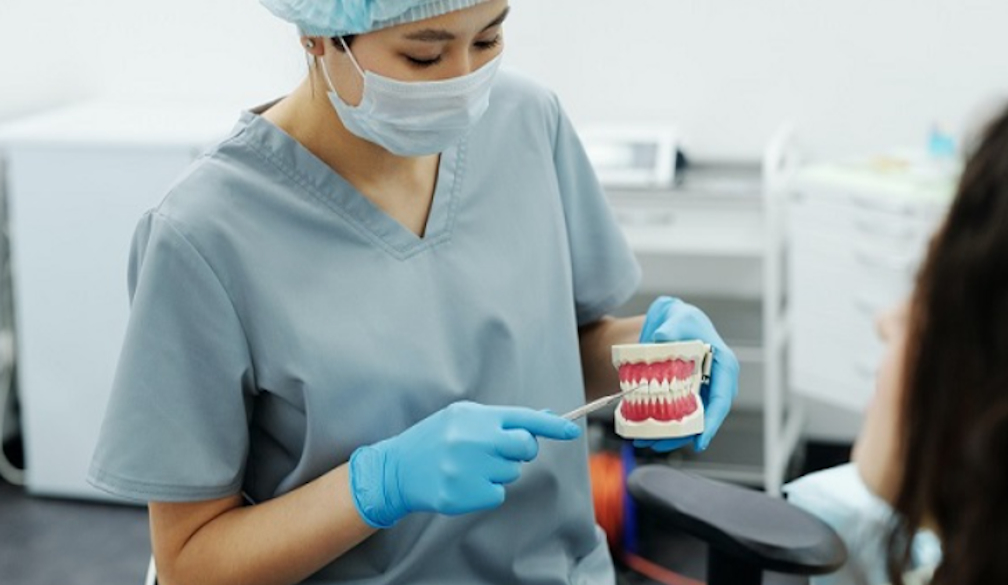Dental Emergencies: What to Do and When to See a Dentist

Introduction:
Dental emergencies can occur unexpectedly, causing pain, discomfort, and anxiety. Whether it's a sudden toothache, a knocked-out tooth, or a broken crown, knowing how to respond promptly and effectively can make a significant difference in the outcome. In Australia, where access to dental care may vary depending on location and circumstances, understanding what constitutes a dental emergency and when to seek professional help is crucial. In this comprehensive guide, we'll explore common dental emergencies, provide step-by-step instructions on what to do in each situation, and discuss when it's essential to see a dentist North Brisbane.
1. Types of Dental Emergencies:
a. Toothaches: Toothaches can be caused by various factors, including dental decay, infection, or trauma. If you experience a severe toothache, rinse your mouth with warm water, floss gently to remove any trapped debris, and take over-the-counter pain medication if necessary. Avoid placing aspirin directly on the tooth or gums, as this can cause irritation. Contact a dentist promptly for an evaluation and appropriate treatment.b. Knocked-Out Tooth: A knocked-out tooth, also known as avulsed tooth, requires immediate attention to maximize the chances of successful re-implantation. Hold the tooth by the crown (top) and rinse it gently with water, being careful not to remove any attached tissue fragments. If possible, place the tooth back into its socket and hold it in place with gentle pressure. Alternatively, store the tooth in a container of milk or saliva and seek emergency dental care within 30 minutes. Dental Implants are one of the factors to consider when planning for such emergencies. Mindarie Quinns Dental Centre provides the highest standards and dental implant costs Perth residents can manage in their budgets.
c. Broken or Chipped Tooth: If you fracture or chip a tooth, rinse your mouth with warm water to clean the area. If there is bleeding, apply gauze to the affected area until it stops. Save any tooth fragments and seek dental treatment as soon as possible. Depending on the extent of the damage, the dentist Mindarie may repair the tooth with bonding material, a filling, or a dental crown.
d. Lost Filling or Crown: Losing a filling or crown can expose the underlying tooth structure, leading to sensitivity and discomfort. While waiting to see a dentist, you can apply dental cement, available at pharmacies, to temporarily cover the exposed tooth. Avoid chewing on the affected side and schedule an appointment with your dentist for a permanent restoration.
e. Dental Abscess: A dental abscess is a bacterial infection characterized by swelling, pain, and pus formation. It can develop either at the root of the tooth (periapical abscess) or in the gum tissue (periodontal abscess). If you suspect a dental abscess, rinse your mouth with salt water to help reduce bacteria and alleviate discomfort. Seek urgent dental care, as abscesses require drainage and antibiotic treatment to prevent complications.
2. When to Seek Emergency Dental Care:
In Australia, access to emergency dental care may vary depending on factors such as location, time of day, and availability of dental services. While some dental practices offer after-hours emergency appointments, others may refer patients to dedicated emergency dental clinics or hospital emergency departments. It's essential to familiarize yourself with local resources and contact information for emergency dental services in your area.
In general, you should seek emergency dental care if you experience any of the following:
- Severe toothache or facial swelling
- Traumatic dental injuries, such as knocked-out or fractured teeth
- Uncontrolled bleeding from the mouth
- Signs of infection, such as fever, swelling, or pus discharge
- Persistent pain or discomfort that interferes with daily activities
If you're unsure whether your situation constitutes a dental emergency, don't hesitate to contact a dentist or seek advice from a healthcare professional. Ignoring dental emergencies can lead to further complications and may require more extensive treatment down the line.
3. Accessing Emergency Dental Services in Australia:
In Australia, emergency dental services may be available through various channels, including private dental practices, public dental clinics, and hospital emergency departments. Depending on your location and circumstances, you may need to call ahead to arrange an emergency appointment or visit a walk-in clinic for immediate care.
If you have private health insurance with dental coverage, check your policy to see if emergency dental services are included and whether any out-of-pocket expenses apply. Some insurers may have preferred provider networks or arrangements with specific dental clinics for emergency care.
For individuals without private insurance or those experiencing financial hardship, public dental clinics and hospital emergency departments may provide emergency dental services at reduced or no cost. However, wait times and availability of services may vary depending on demand and resource constraints.
It's important to note that while emergency dental services aim to address urgent dental needs, they may not always provide comprehensive treatment or long-term solutions. Follow-up care may be necessary to ensure optimal oral health and prevent future dental emergencies.
Conclusion:
Dental emergencies can be stressful and frightening, but knowing how to respond calmly and effectively can make all the difference. By familiarizing yourself with common dental emergencies, understanding when to seek professional help, and accessing emergency dental services in Australia, you can protect your oral health and minimize the impact of unexpected dental issues. Remember, prompt action and timely intervention are key to preserving your smile and overall well-being.
